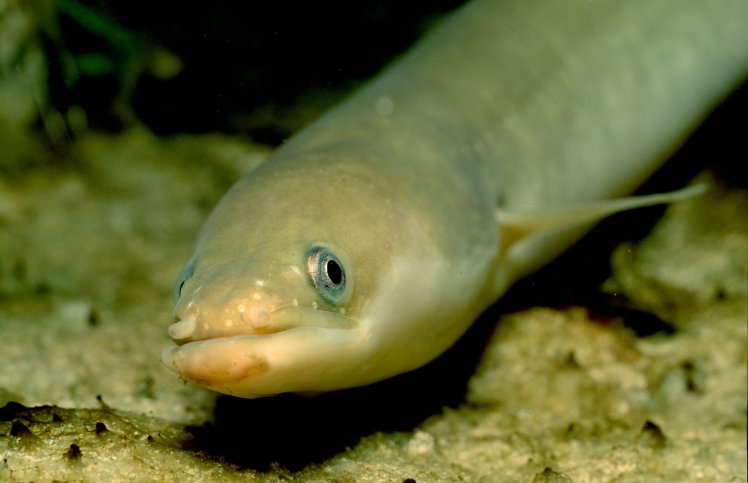
Endangered Eels Are Getting High on Cocaine Pollution, And It’s Actually Not Funny.
Researchers in Italy have found that small amounts of cocaine in water can make eels hyperactive and cause significant muscle damage.
These findings are disconcerting, because European eels in the wild are critically endangered, their future compromised by factors like habitat-loss, dam construction, pollution and over-fishing.
The researchers first took 150 European eels (Anguilla anguilla) that had been raised on farms and divided them into several different tanks. Some of the tanks contained small amounts of cocaine—20 nanograms per liter, which corresponds to the mean concentration of the drug that has been detected in surface waters—and some were filled with tap water. The eels were kept in the tanks for 50 days. Then two groups of the cocaine-exposed eels were placed in tanks of cocaine free water—one group for three days, the other for ten.
At the end of the experiment, the unfortunate creatures were killed and dissected for analysis. The results, published in Science of the Total Environment, showed that the cocaine-exposed eels suffered a host of adverse health effects.
While the experiment was ongoing, these eels swam unusually fast, but otherwise seemed as healthy as the drug-free eels. Their insides, however, told a different story. According to Joshua Rapp Learn of National Geographic, the researchers found that cocaine had accumulated in the animals’ muscles, brains, gills, skin and other tissue. Their muscles were swollen, and even showed signs of fiber breakdown.
European eels spend up to 20 years in fresh waters, then undertake a vast migration across the Atlantic to spawn in the Sargasso Sea east of the Caribbean. “This means that, in addition to sufficient energy reserves, the eel needs a healthy skeletal muscle and an efficient aerobic metabolism, in order to complete successfully its migration,” the study authors write. If their muscles are damaged, the eels’ ability to complete the journey could be compromised.
There are a number of ways that drugs can end up in rivers, streams and other bodies of water. Sometimes, they are improperly discarded—flushed down the toilet, for instance. In addition, our bodies only metabolize a small amount of the drugs that we consume. The rest is excreted in urine or feces, and can end up in wastewater, according to Harvard Health Publishing.
Studies have shown that a host of animals are affected by the drugs that pollute marine environments. In 2016, for example, oysters from two Oregon bays were found to contain traces of medications like antibiotics, antihistamines and pain relievers. Fish with male and female sex traits have been found in Northeastern waterways, and scientists believe that hormones from birth control pills might be contributing to the problem.
And, as the authors of the recent study point out, drugs in the water could potentially have negative implications for humans. It’s possible that people who eat European eel may inadvertently be consuming cocaine, too: “Since the skeletal muscle is the edible part of the eel, and bioaccumulates cocaine to a large extent, these results suggest the possibility that cocaine could be taken by humans with food, although further studies are needed to verify this hypothesism,” the researchers write.













